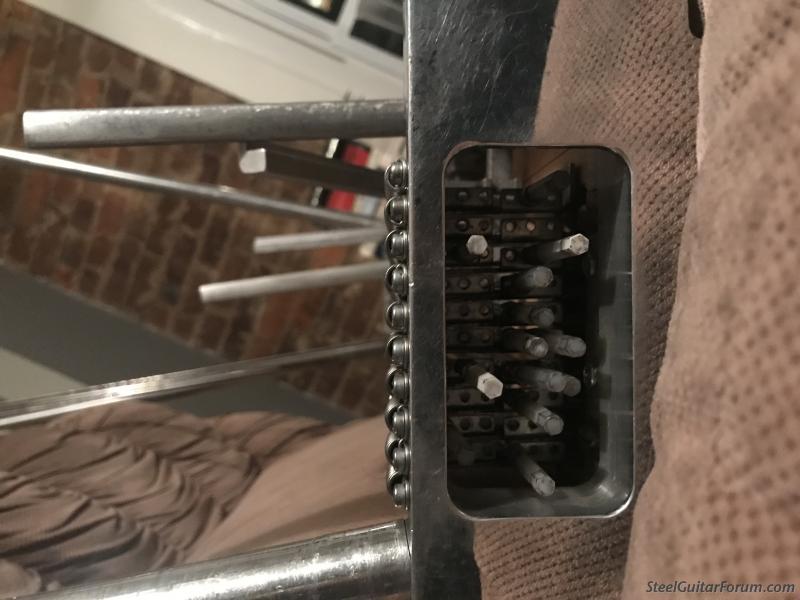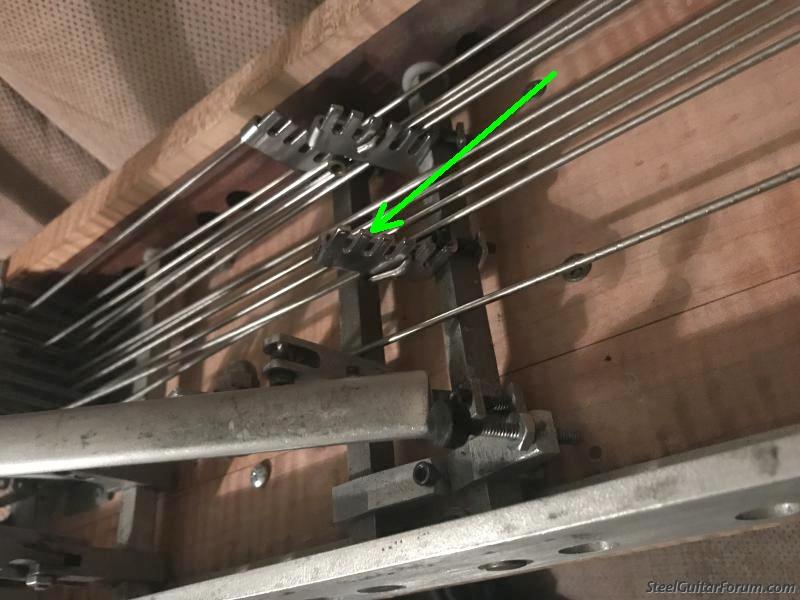The main symptom of Overtuning is:
---when you are trying to tune a pedal by tightening the nylon tuning nut for more raise or more lower, by the time you get to pitch, the open string is no longer in tune when you release the pedal. So you retune the open string and now the pedal is no longer in tune. So you retune the nylon tuner. Then retune the string.....ever watch a dog chase its tail? That.
A secondary issue that is related but also stands on its own as a problem needing solving is Undertuning:
---you just can't get it to pull to your target pitch no matter how much you turn the nylon nut.
The basic issue of Overtuning is:
The changer must be at rest when the pedals are not engaged. The changer fingers must be sitting at their stops -- their resting place -- at the end plate. They should appear all lined up in a row with none of them slightly indented.
AT REST
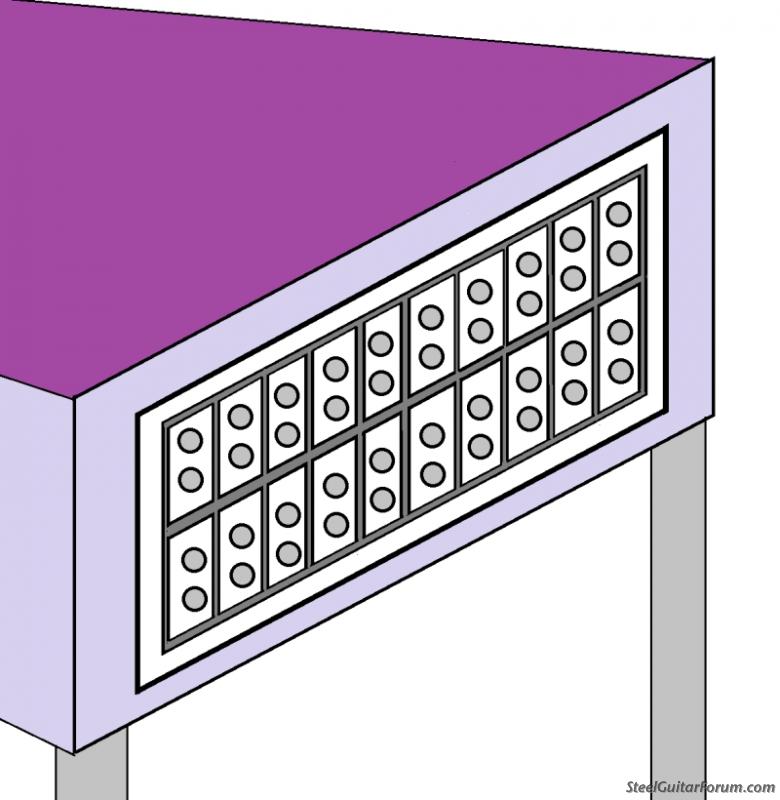
SUSPENDED
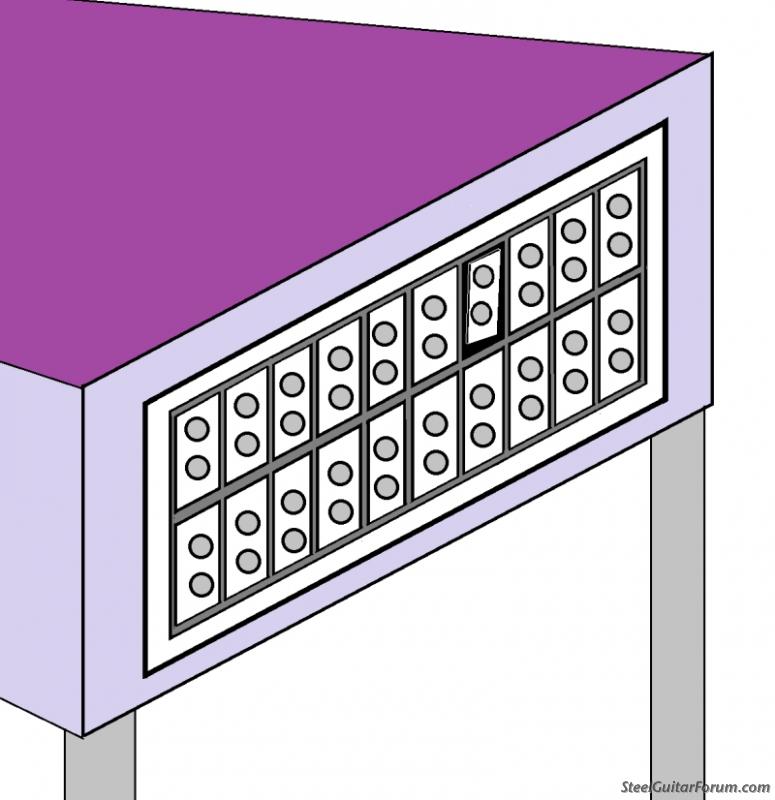
Here we see that the 4th string is coming back sharp. So we retuned the string. Now the lever isn't raising the string enough. So we tightened the lever more.....we've got problems.
The pull rods with nylon tuners must have a little bit of play in them. This is a situation where tight and wiggle-free is NOT a good thing.
When the pedal is depressed, the pull rod pulls the changer finger away from its stop. When the pedal is released, the changer finger must return to its stop. It cannot be left hanging on the nylon tuner.
THIS IS CRUCIAL. AN ALL-PULL PEDAL STEEL WILL NOT PLAY WITH RELIABLE REPEATABILITY IF THE CHANGER HANGS ON THE NYLON TUNERS.
Let's fix it.
If you are tuning the pull and you tighten the nylon tuner more and more but cannot get the pedal to its pitch before the open string starts to change, the problem is that the pedal is not creating enough rod movement.
So------first, back off the nylon tuner until the finger is at rest. It always comes back to this.
To gain more movement from the pedal you can do one or more of the following things that will either:
--- increase the amount that the pedal moves by adjusting its stopping point
or
--- increase the amount of rod movement you get per inch of pedal movement by changing the leverage of the pulling system.
For a pedal, find the thing that stops the pedal at the end of its stroke. It may be a screw/bolt right where the pedal rod attaches to the cross shaft or it may be a small set screw in the front apron. Or it may be a fixed, non-adjustable stop. It may be the starting/resting point that is adjustable. Whichever method is used, by making the stroke longer you get more pull at the changer.
These are Sho-Bud pedal stops.
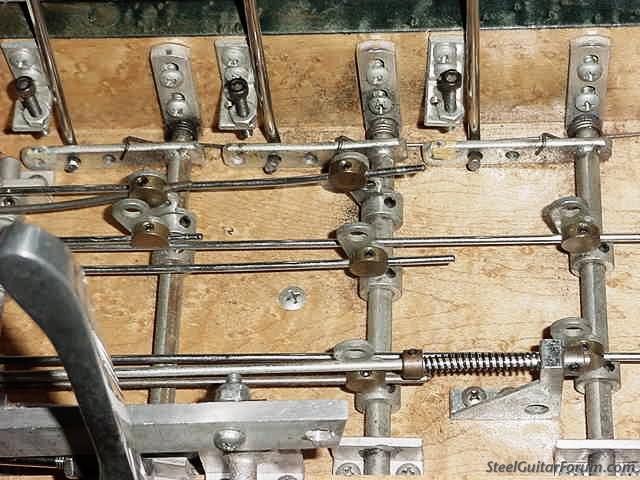
Unscrew the screw, get more pedal travel.
Now try to tune the nylon nut and see if you have enough action to get to your pitch without overtuning the nut.
This pedal (Fessenden) does not have an adjustable stop but it has an adjustable start.
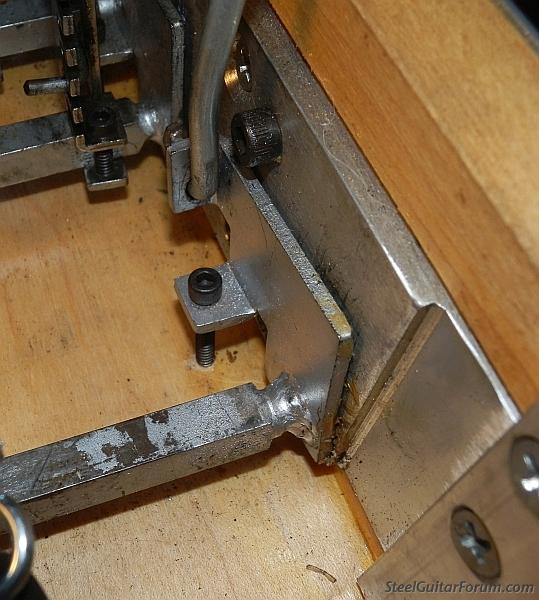
Unscrew this.
Now try to tune the nylon nut and see if you have enough action to get to your pitch without overtuning the nut.
THIS IS A LEVER STOP

Unscrew this screw to gain more throw and more pull.
Now try to tune the nylon nut and see if you have enough action to get to your pitch without overtuning the nut.
-----the hole or slot in the bellcrank that is selected for the pull rod is a major factor in the amount of pull you get out of your pedal movement. A hole closer to the cross shaft gives less pull, a hole farther from the shaft gives more. If you need more pull at the changer for the same amount of pedal movement, move the pull rod to a better hole.
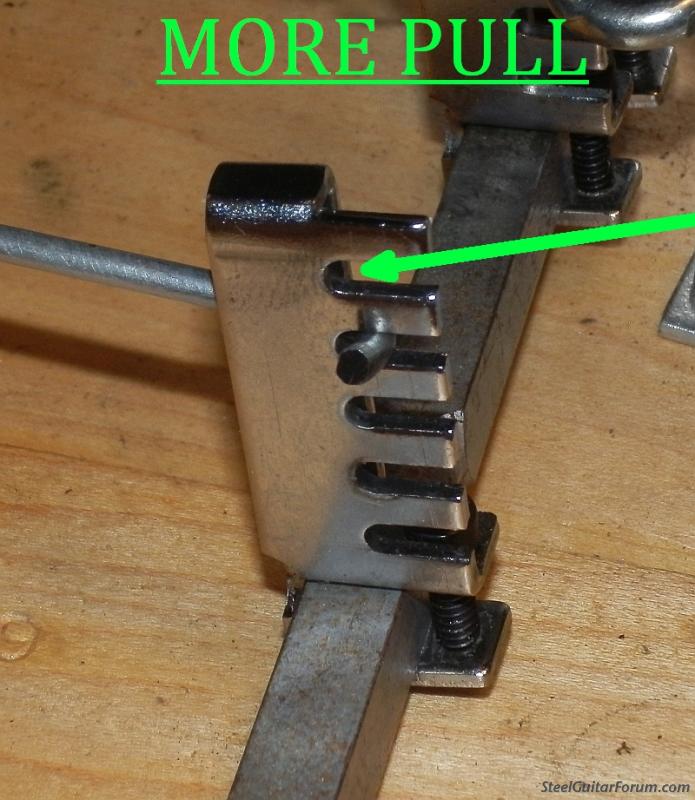
Now try to tune the nylon nut and see if you have enough action to get to your pitch without overtuning the nut.
-----the hole in the changer finger is also a factor. It works in the opposite direction of the bellcrank holes. The hole closer to the top of the guitar gives more pull. If you have a mental grasp of leverage, that is what's in play here. (If not, don't worry about it).
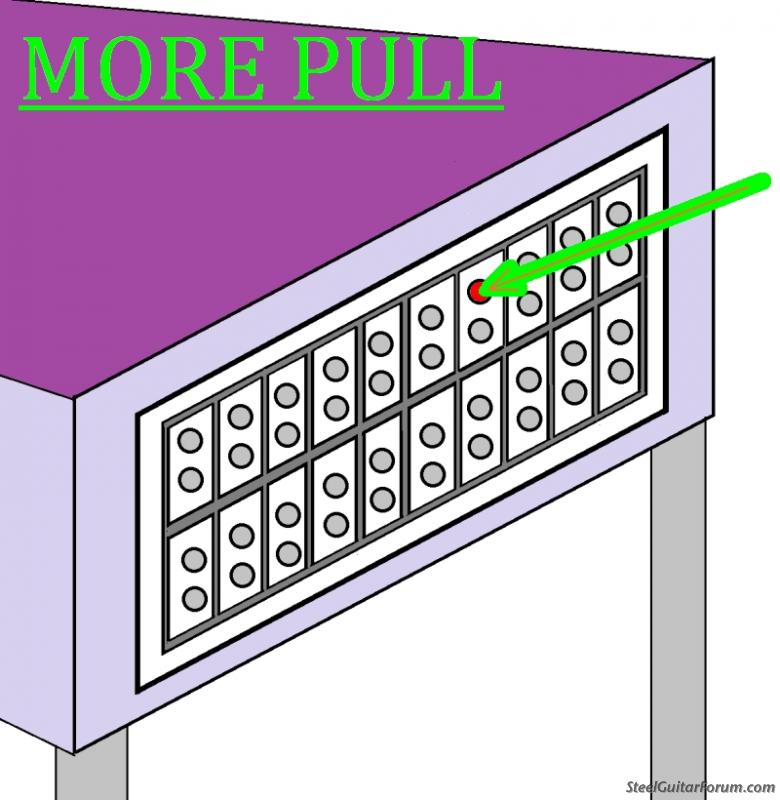
Now try to tune the nylon nut and see if you have enough action to get to your pitch without overtuning the nut.
There are a bunch of other reasons to choose one hole over another when setting up a steel guitar from scratch and these factors should be considered when changing things. Routing rods so that they do not interfere with other rods, selecting holes to synchronize two strings on the same pedal so that they start and stop their pulls at the same time (different gauge strings have different needs) and synchronizing pedals so that they feel in sync with one another in terms of pressure and start/stop heights----these are all considered when assembling a guitar.
Choice of hole at bellcrank and at changer will be a factor in how heavy or light the feel of the pedal/lever is. This is a more advanced level of adjustment that can be tinkered with once you have a good feel for the other mechanical issues. But it must be secondary to the essential issue being discussed here.
A pedal steel guitar that will not reliably return to pitch is all but unplayable and the cause is so frequently overtuning that this should be the first thing to check for.
Repeat: does the nylon tuner (no pedals or levers engaged) depress the changer finger (the thing with the holes in it) or is there a little bit of slack in the rods (as there should be)?
This must be the first thing to inspect for if the guitar is inconsistently in/out of tune with pedals up, pedals down or both.
